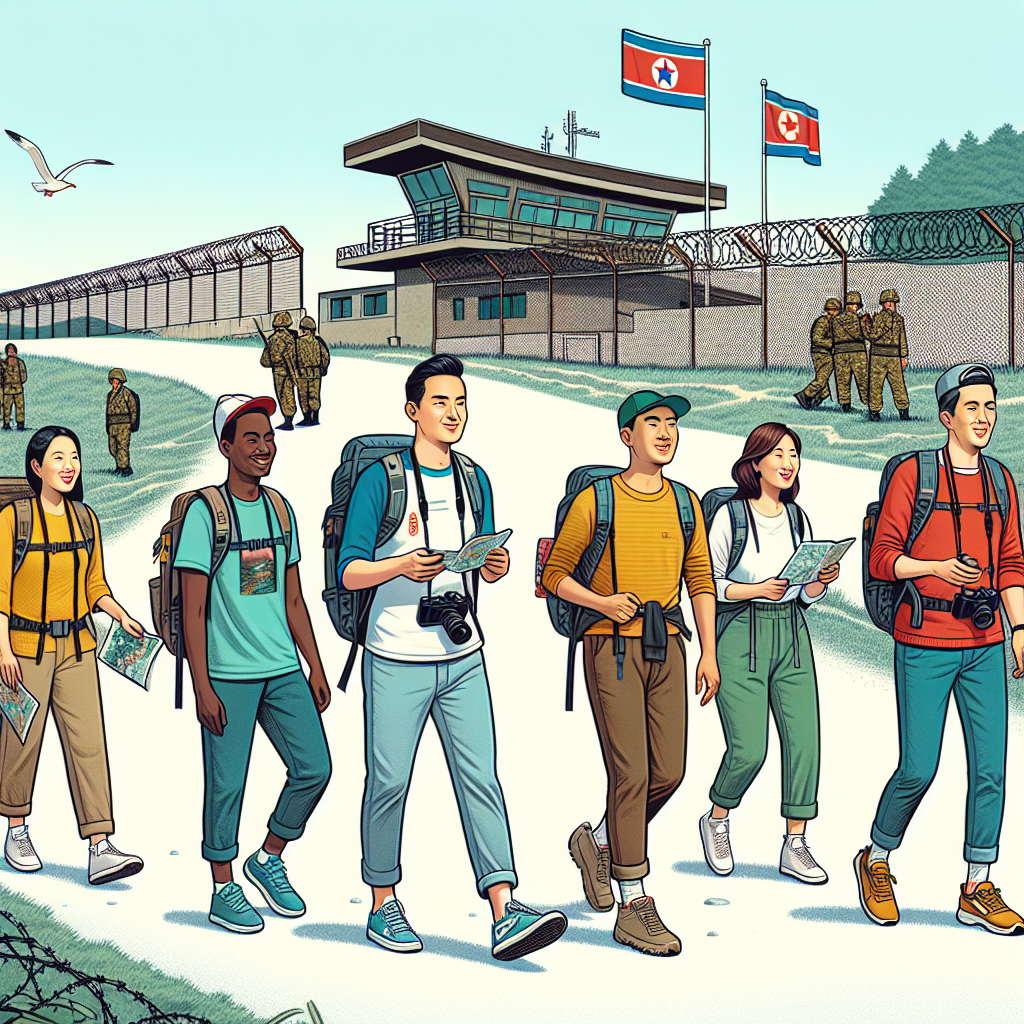Tips berkunjung ke DMZ: Zona Demiliterisasi Korea. Jelajahi perbatasan yang memisahkan Korea Utara dan Selatan, saksikan sejarah dan ketegangan yang ada.
Tips Berkunjung ke DMZ: Zona Demiliterisasi Korea
-
Table of Contents
- Introduction
- Understanding the DMZ
- What is the DMZ?
- Why visit the DMZ?
- Planning Your Visit
- Booking a Tour
- Choosing the Right Tour
- Checking Travel Restrictions
- What to Expect During Your Visit
- Security Measures
- Joint Security Area (JSA)
- Third Tunnel of Aggression
- Etiquette and Safety
- Respecting the Sensitivity
- Following Safety Guidelines
- Photography Restrictions
- Conclusion
Introduction

The Demilitarized Zone (DMZ) is a unique and intriguing destination for travelers visiting Korea. Located between North and South Korea, the DMZ offers a glimpse into the tense and complex history of the Korean Peninsula. This article aims to provide valuable tips for those planning to visit the DMZ, ensuring a safe and memorable experience.
Understanding the DMZ
What is the DMZ?
The DMZ, or Demilitarized Zone, is a strip of land that stretches across the Korean Peninsula, dividing North and South Korea. Established in 1953 after the Korean War, the DMZ serves as a buffer zone between the two countries. It is approximately 250 kilometers long and 4 kilometers wide, encompassing various landmarks and attractions.
Why visit the DMZ?
Visiting the DMZ offers a unique opportunity to witness the ongoing tension between North and South Korea. It allows visitors to gain insight into the history, politics, and culture of the Korean Peninsula. Additionally, the DMZ is home to several significant landmarks, such as the Joint Security Area (JSA) and the Third Tunnel of Aggression, which further enhance the experience.
Planning Your Visit
Booking a Tour
To visit the DMZ, it is highly recommended to book a guided tour. Several tour operators offer comprehensive packages that include transportation, entry permits, and knowledgeable guides. Booking a tour ensures a hassle-free experience and provides access to restricted areas that are otherwise inaccessible to individual travelers.
Choosing the Right Tour
When selecting a tour, consider the specific attractions and activities included. Some tours focus on historical sites, while others offer a more immersive experience, such as visiting a North Korean infiltration tunnel. Research different tour options and read reviews to find the one that aligns with your interests and preferences.
Checking Travel Restrictions
Before planning your visit, it is crucial to check for any travel restrictions or advisories. The political situation on the Korean Peninsula can change rapidly, and certain areas of the DMZ may be temporarily closed to visitors. Stay updated with the latest news and consult with your tour operator or local authorities to ensure a safe and uninterrupted visit.
What to Expect During Your Visit
Security Measures
Upon entering the DMZ, visitors are subject to strict security measures. This includes passport checks, security screenings, and adherence to specific dress codes. It is essential to follow all instructions given by your guide and respect the rules and regulations in place. Failure to comply may result in denied entry or expulsion from the area.
Joint Security Area (JSA)
The Joint Security Area, also known as Panmunjom, is one of the most popular attractions within the DMZ. It is the only place where visitors can step into North Korean territory, albeit briefly. Here, you can witness the iconic blue buildings that straddle the border and observe North Korean soldiers from a safe distance. The JSA tour provides a unique opportunity to experience the tension between the two countries firsthand.
Third Tunnel of Aggression
Another highlight of the DMZ is the Third Tunnel of Aggression. Discovered in 1978, this tunnel was built by North Korea as a potential invasion route into South Korea. Visitors can descend into the tunnel and explore its depths, gaining insight into the military strategies employed during the Korean War. It is advisable to wear comfortable clothing and shoes as the tunnel can be narrow and steep.
Etiquette and Safety
Respecting the Sensitivity
It is crucial to approach your visit to the DMZ with sensitivity and respect. The area holds significant historical and political importance, and it is essential to be mindful of the emotions and sensitivities involved. Avoid making any provocative gestures or comments that may escalate tensions or offend others.
Following Safety Guidelines
While the DMZ is a fascinating destination, it is important to prioritize safety. Follow all safety guidelines provided by your tour guide and stay within designated areas. Do not wander off or attempt to cross any boundaries without proper authorization. The DMZ is still an active military zone, and any unauthorized actions can have severe consequences.
Photography Restrictions
Certain areas within the DMZ have strict photography restrictions. It is essential to follow these guidelines and refrain from taking photographs in prohibited areas. Your tour guide will provide clear instructions on where photography is allowed and where it is not. Respect these rules to ensure a smooth and respectful visit.
Conclusion
Visiting the DMZ is a unique and eye-opening experience that allows travelers to witness the tension and history of the Korean Peninsula. By following the tips provided in this article, such as booking a guided tour, respecting security measures, and adhering to safety guidelines, visitors can ensure a safe and memorable visit to the DMZ. Remember to approach your visit with sensitivity and respect, as the DMZ holds immense significance for both North and South Korea.







